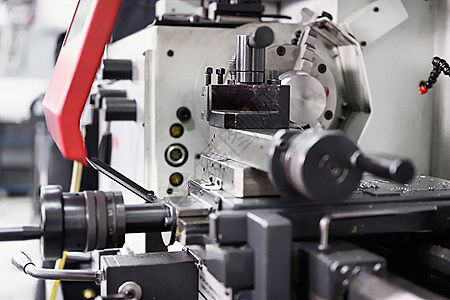
For turning parts, there are three types of holes that can be used to hold internal threads:
1. On the shaft: from one end directly through the hole in the center of the turning part
2. Axial: Start at one end of the part, but not completely through the hole in the center
3. Radial: through the hole of the external arc of the turning part
Internal threads are machined using a single lip thread tool instead of a conventional thread tap. When machining internal threaded holes, the holes may be longer than our threaded tool can reach. In this case, depending on your needs, you have several options:
For long through holes over a Z range, select the hole from the side where you expect to start the screw. If your screw needs to go all the way through the part, you will also have to do it through a tap through the hole (in two DI).
It is also possible to select both sides of the feature to be threaded, but note the Z large thread depth as they overlap each other in the hole. This raises concerns about the characteristics of tapping from both sides, as there is a risk of cross-tapping and the screw may not fully penetrate the part. Selecting threads from both sides is usually fine as long as the threads are disjoint.
An important consideration relates to the various diameters involved in creating threads. You need to consider three measures: the main (wide) thread, the secondary (narrow) thread, and the diameter of the guide hole into which the thread features will enter.
For turning parts, there are three types of holes that can be used to hold internal threads:
1. On the shaft: from one end directly through the hole in the center of the turning part
2. Axial: Start at one end of the part, but not completely through the hole in the center
3. Radial: through the hole of the external arc of the turning part
Internal threads are machined using a single lip thread tool instead of a conventional thread tap. When machining internal threaded holes, the holes may be longer than our threaded tool can reach. In this case, depending on your needs, you have several options:
For long through holes over a Z range, select the hole from the side where you expect to start the screw. If your screw needs to go all the way through the part, you will also have to do it through a tap through the hole (in two DI).
It is also possible to select both sides of the feature to be threaded, but note the Z large thread depth as they overlap each other in the hole. This raises concerns about the characteristics of tapping from both sides, as there is a risk of cross-tapping and the screw may not fully penetrate the part. Selecting threads from both sides is usually fine as long as the threads are disjoint.
An important consideration relates to the various diameters involved in creating threads. You need to consider three measures: the main (wide) thread, the secondary (narrow) thread, and the diameter of the guide hole into which the thread features will enter.
